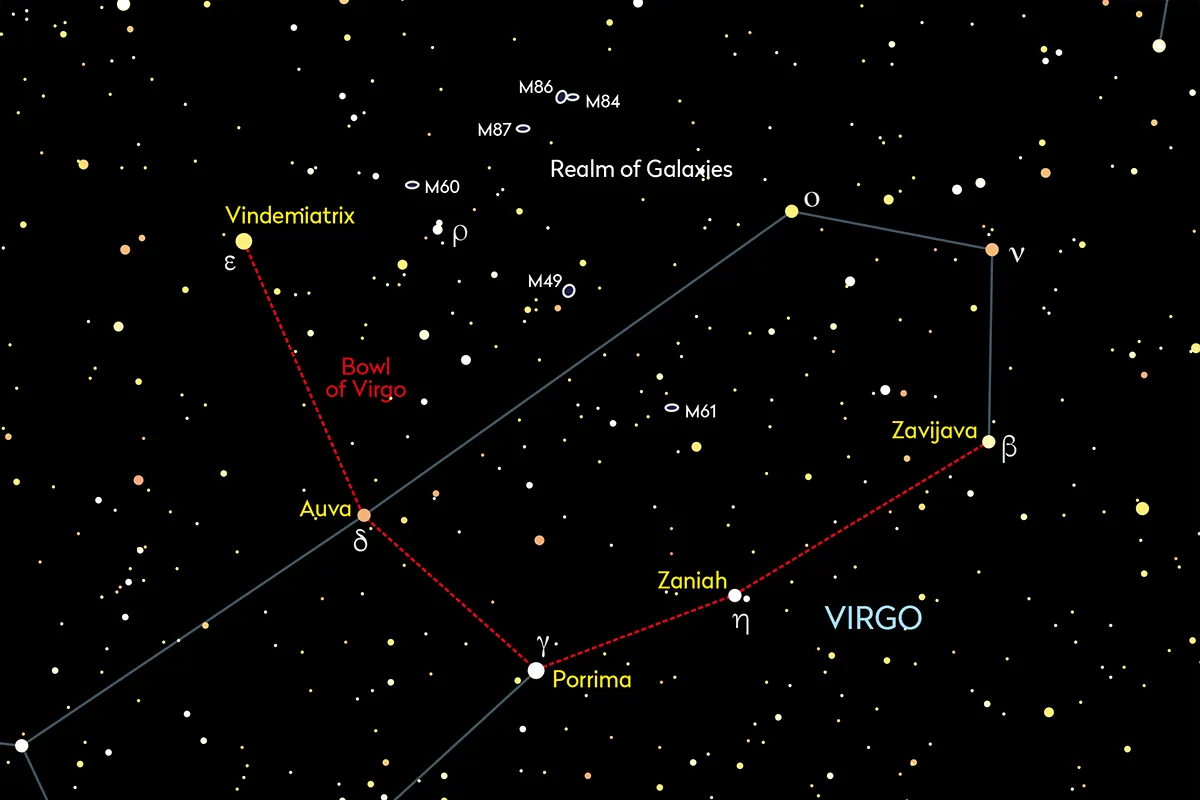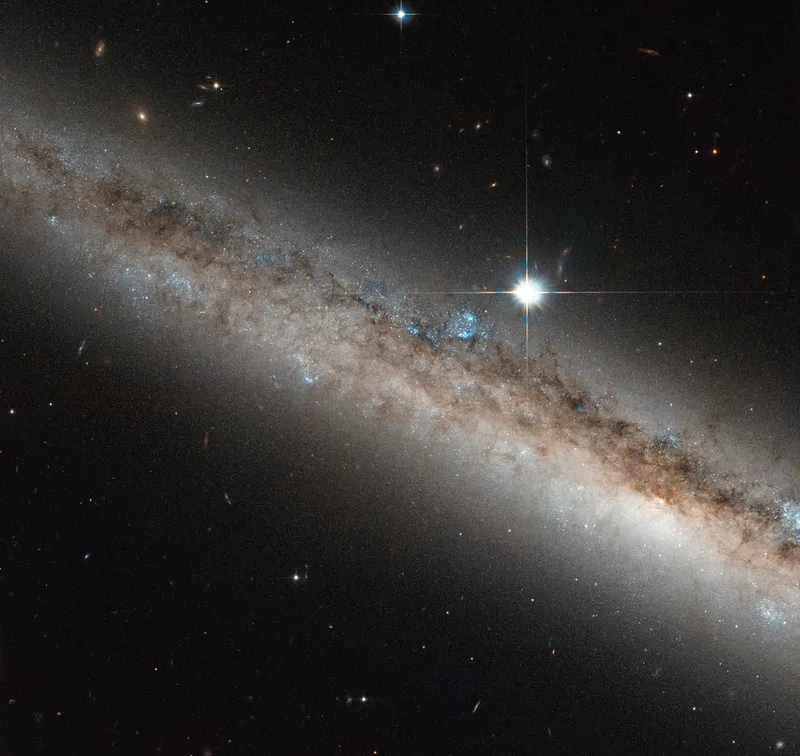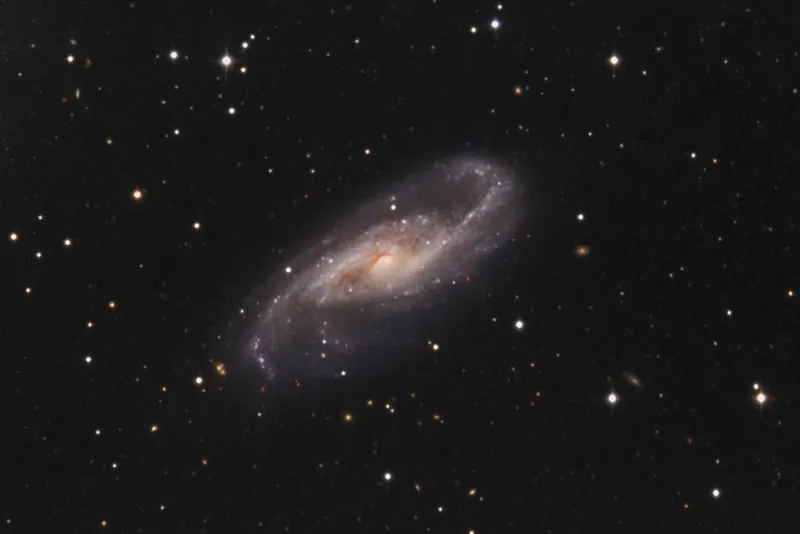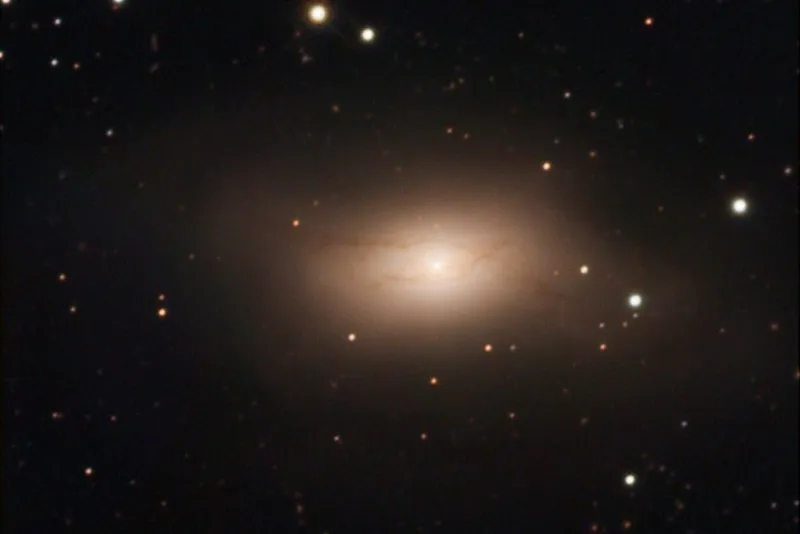Virgo is a sprawling constellation defined by the Bowl of Virgo asterism. Inside the Bowl lies the ‘Realm of Galaxies’, thanks to the presence of the Virgo Supercluster.
The Bowl of Virgo is an informal star pattern that contains wonderful galaxies just ripe for exploring through your telescope.
Springtime is known as 'galaxy season' for astronomers, and if you're looking for a good place to start, the Bowl of Virgo should be high on your list.

It's located, unsurprisingly, in the Virgo constellation, and we've put together 6 of the most beautiful galaxies you can find in the Bowl of Virgo.
See how many you can check off our list. For help finding them, download our chart showing galaxies in the Bowl of Virgo (PDF).
6 galaxies in the Bowl of Virgo
NGC 4517

NGC 4517 is in the less populated southern part of the Bowl. This mag. 10.4 galaxy is an edge-on spiral 9 x 1.5 arcminutes in size, 40 million lightyears away and a member of the Virgo II Cloud, a series of galaxies that stretches for 30 million lightyears off the southern edge of the main Virgo Supercluster.
NGC 4517 is just visible through a 150mm scope, 2.2° west and 1.6° north of Porrima (Gamma (γ) Virginis) and just southeast of a 10th-magnitude star. A 250mm scope shows the galaxy’s elongated nature, but there’s no obvious core brightening.
NGC 4536

Head 2.1° north, bending a small amount to the east as you go. This will bring you to the vicinity of NGC 4536, another mag. 10.4 galaxy. Smaller than NGC 4517 at 7 x 3 arcminutes, it’s a beautiful object in long-exposure photographs, with extensive spiral arms. NGC 4536 is fairly inclined to our line of sight, albeit not as much as NGC 4517.
Visually, the core region appears as an elongated elliptical glow through a 150mm scope, taking on a more lenticular appearance through a 250mm instrument. The arms are hard to detect unless you are using a large aperture telescope. Lying at a distance of 49 million lightyears, like our first target this galaxy lies in the Virgo II Cloud.
NGC 4643

NGC 4643 is located 2.2° east and a fraction south of NGC 4536. It’s mag. 10.6, slightly dimmer than some of our other Bowl of Virgo galaxies, but is smaller at 3.4 x 2.7 arcminutes. This gives it higher surface brightness and it appears relatively bright when viewed through a 150mm scope. It’s a lenticular galaxy that appears circular through the eyepiece.
The outer halo is elongated through larger apertures, showing a bright star-like nucleus. Long-exposure images show it has a polar ring of stars surrounding the core. NGC 4643 lies at a distance of 79 million lightyears.
NGC 4632

Galaxy NGC 4632 lies 2° south of NGC 4643. This is a spiral galaxy of magnitude 11.7 and with apparent dimensions of 3 x 1.2 arcminutes. Here, despite being more compact in apparent size, its dimmer magnitude keeps its surface brightness fairly low.
As a consequence, though a 150mm scope it appears as a faint smudge, the full extent of which isn’t apparent. Its apparent size through a small scope is around 1.3 x 0.8 arcminutes, making it one of the trickiest galaxies to see in the Bowl of Virgo. A larger instrument will show more of the galaxy’s star halo, its brightness rising gently to a broad core. NGC 4632 is estimated to lie at a distance of 99.2 million lightyears.
NGC 4666

NGC 4666, 0.8° southeast of NGC 4632, is another spiral. This is a mag. 10.8 object of 4.6 x 1.3 arcminutes, giving it a decent overall surface brightness. It’s highly inclined to our line of sight, which also helps concentrate its brightness. A low power through a 150mm scope will show it as an elongated needle streak, 3 x 0.5 arcminutes in size.
A 250mm scope gives the galaxy more length, extending its halo to 4 arcminutes. The core appears distinctly elongated too, brightening to a star-like centre. Known to be a starburst galaxy, one showing an enhanced rate of star formation, NGC 4666 lies at a distance of 55 million lightyears.
NGC 4753

Our final target takes us out of the Bowl of Virgo. Head from NGC 4666 for a distance of 2.1° in an east-southeasterly direction to arrive at mag. +9.9 NGC 4753, another example of a lenticular galaxy. It’s obvious through a 150mm scope at low power, appearing slightly elliptical in shape, 2 x 1.5 arcminutes in size. The core is bright and appears like an elongated star.
A 250mm or larger scope will show the outer halo better, offering a chance to catch a dark dust lane in the northeast. This object lies at a distance of 60 million lightyears and, like our other targets, is part of the Virgo II Cloud, extending south of the main Supercluster.
Have you managed to check all 6 galaxies off our Bowl of Virgo list? Let us know how you got on by emailing contactus@skyatnightmagazine.com
